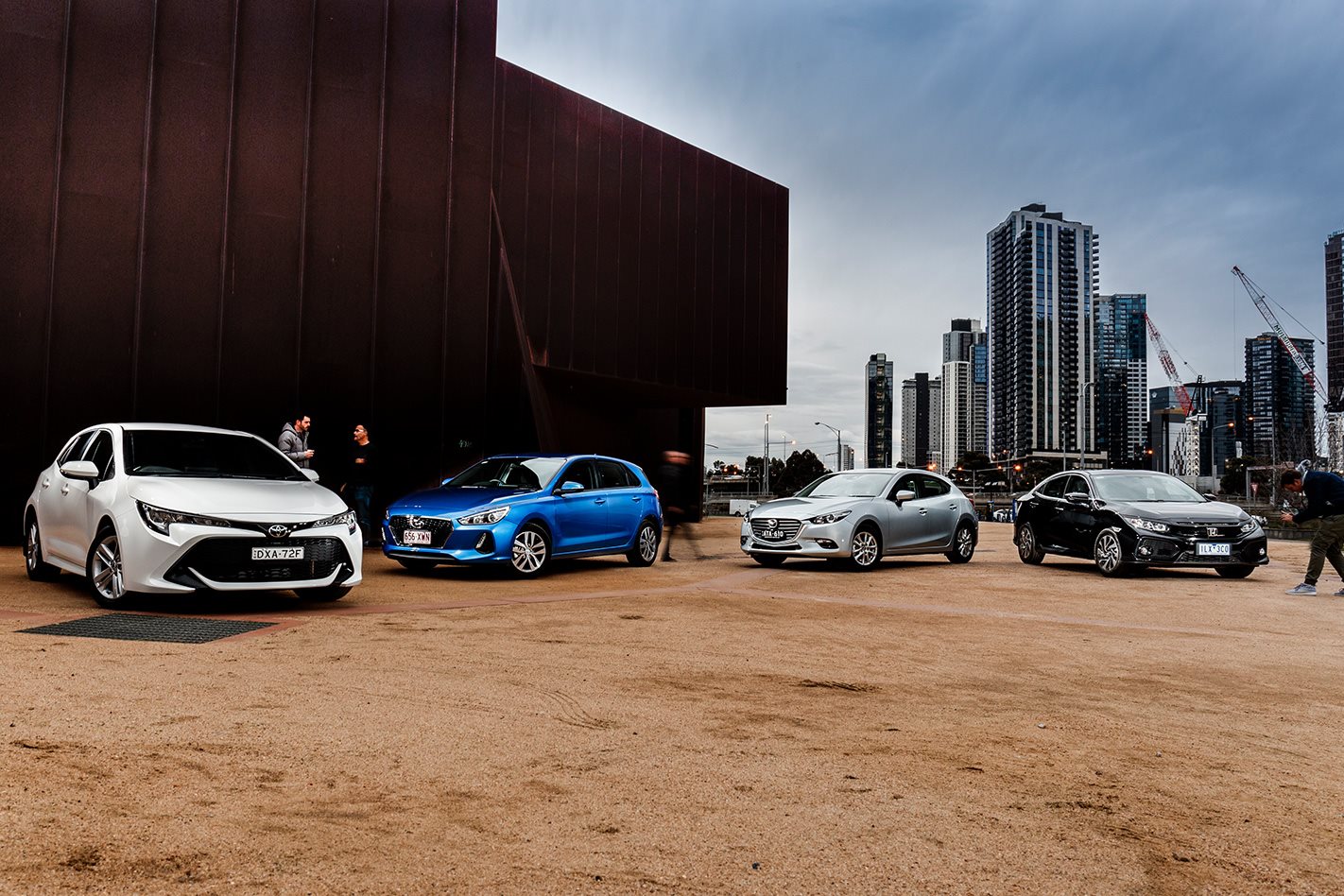SINCE launching in 1967, the Toyota Corolla has witnessed plenty – the civil rights movements, sexual revolution, space race, fall of communism, rise of the internet, Ford’s AU Falcon – but surprisingly few Wheels comparo wins.
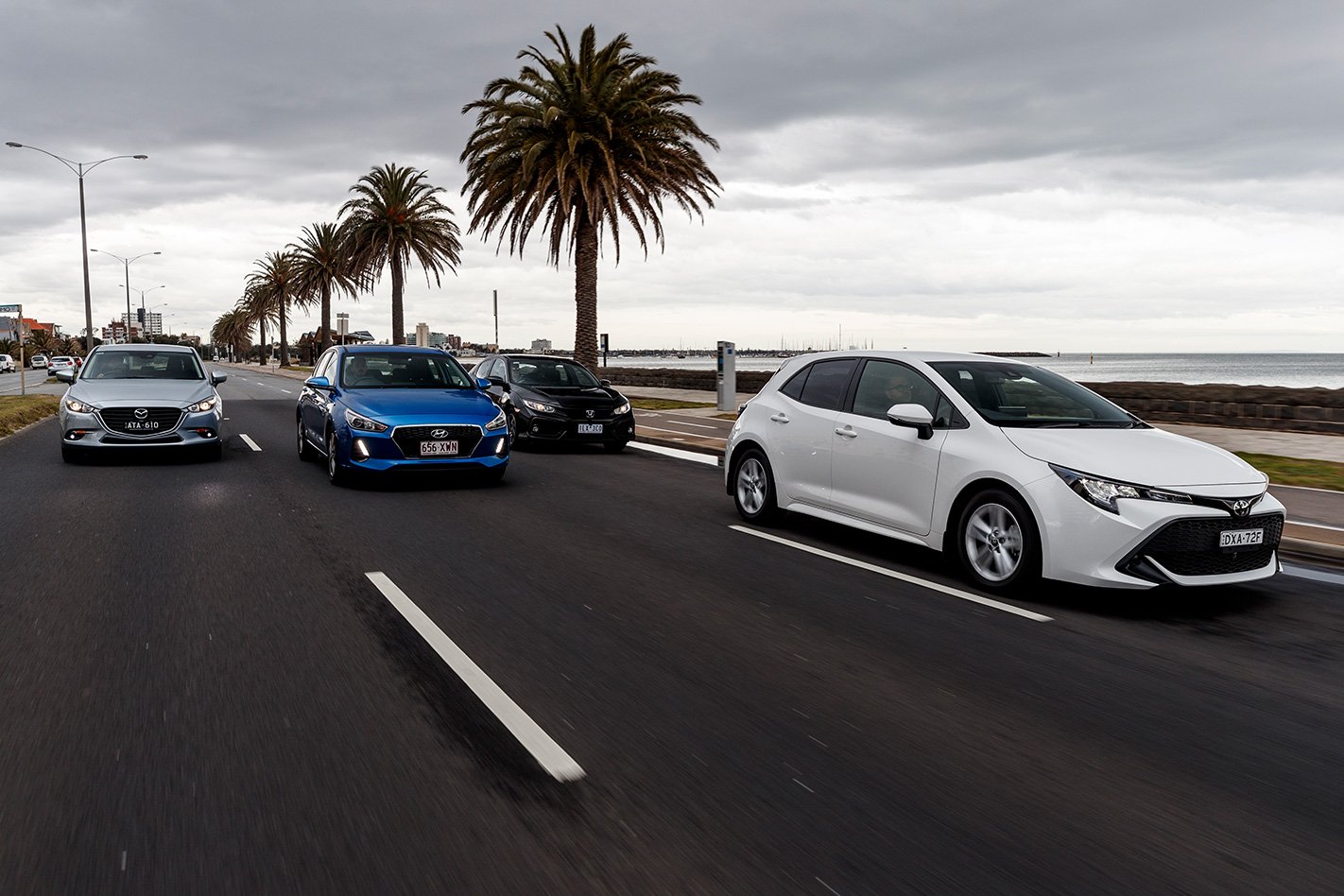
Let’s count ’em. It wasn’t until the February 1973 issue that the second-gen KE20 finally outgunned its rivals (the Ford Escort, Mazda 1300 and Datsun 1200). But the lardy KE30 (’74) and boxy KE70 (’81) that followed were well off the pace, leaving the first front-drive AE80 to snare two more victories (August 1985 and July ’86).
Frustratingly, Corolla regressed again through three successive rebodies (1989 E90, ’94 E100 and ’98 E110), before the newly minted MC-platformed E120 brought home gold in late 2002 and early ’03, though that momentum waned with the 2007 E150 and ’12 E180. By January 2017’s megatest the latter limped home in tenth position.
That’s just five comparo conquests out of 40-ish in 51 years, folks.
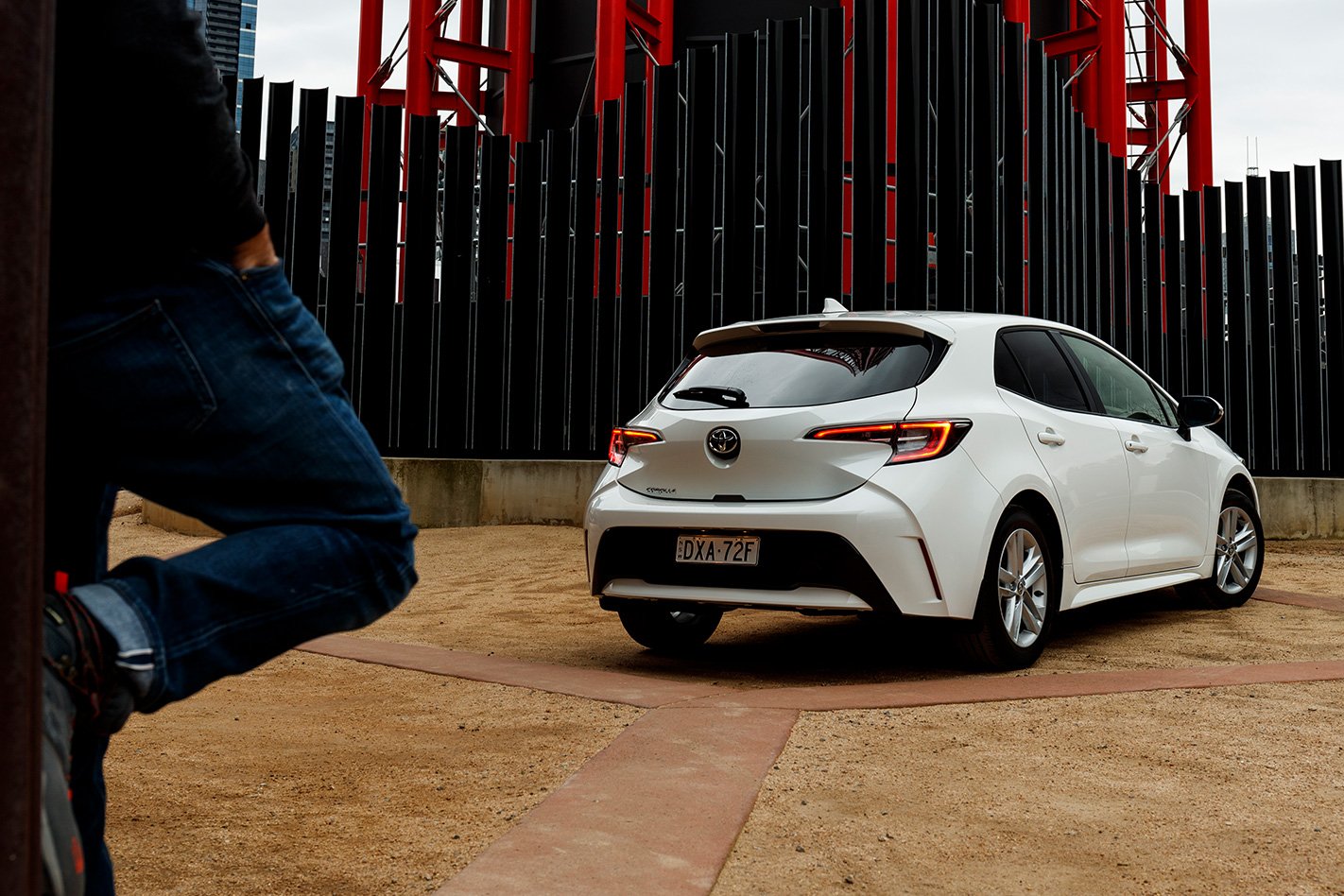
Yes, yes, we know. Corolla’s been our best-selling passenger car for much of this decade. But buyers aren’t always the best judges. Even Toyota publicly admitted that things needed improving, with president Akio Toyoda declaring a ‘return to fun’ several years ago after recall scandals rocked the brand to its core.
That shake up has resulted in the Toyota New Generation Architecture, with TNGA spwaning the Prius IV, C-HR small SUV and the 2018 Camry – the latter pair beating their rivals in these very pages – as well as the latest, E210 Corolla. All share the same basic hallmarks of a long wheelbase, wide track, low centre of gravity, optimal weight distribution, exceptional rigidity, independent rear suspensions and freshly engineered powertrains.
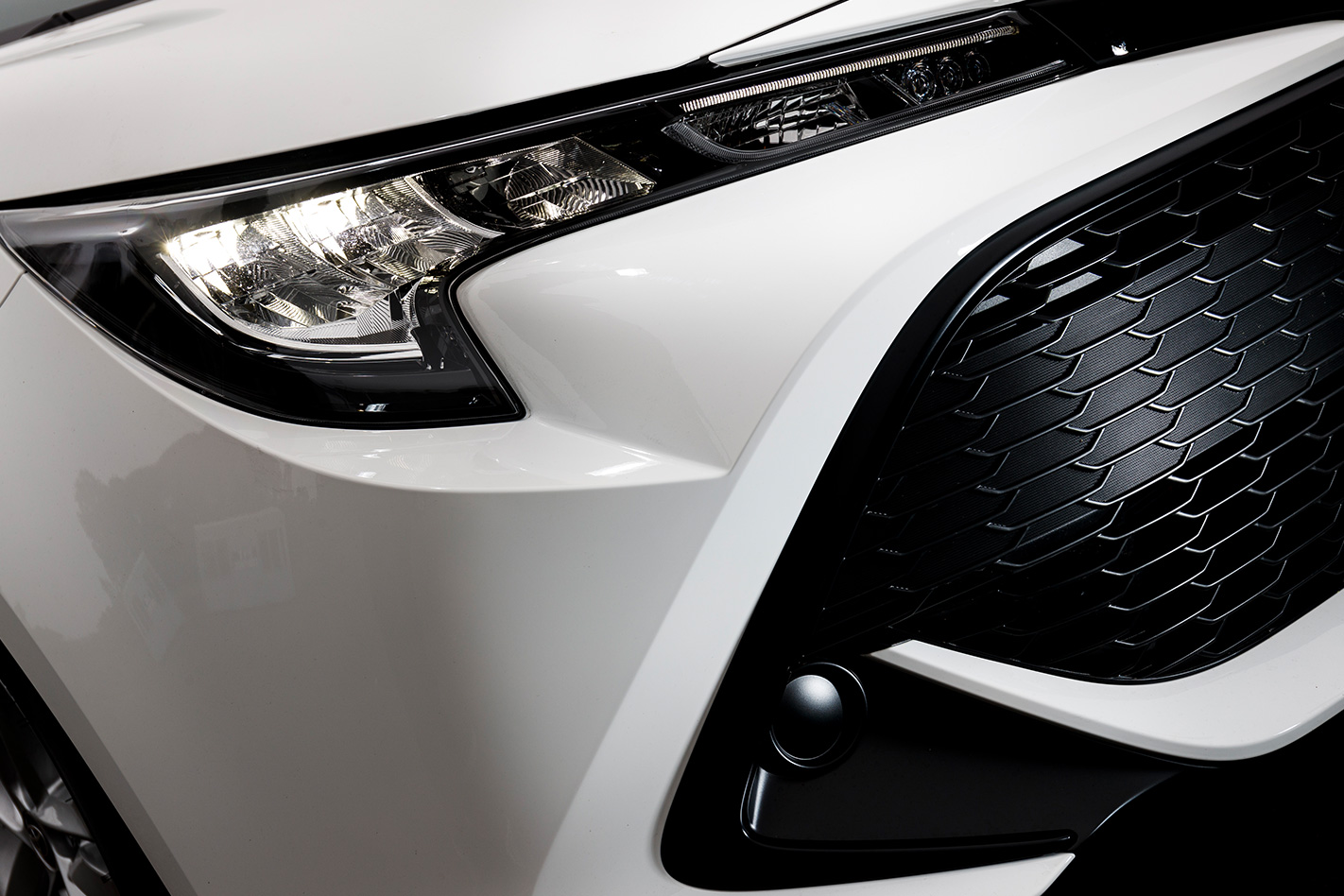
So, a dozen regenerations later, can Toyota’s demi-centenarian small-car stalwart manage a TNGA comparo trifecta? To find out, we went straight for the sales juggernaut – the base auto (for now) Ascent Sport CVT, from a not-inconsiderable $24,370.
While a new-fangled platform and front-end styling seemingly inspired by the US glam rockers Kiss are well and good, what will the Corolla heartland make of a $1650 price jump, a three-year warranty when most now offer five (or more), and a boot capacity less generous than the smaller Yaris’ at just 217 litres? It was 360L in the previous-gen!
There’s no Apple CarPlay/Android Auto smartphone mirroring either, but the Corolla strikes back with segment-first standard active cruise control, bundled with autonomous emergency braking (AEB), lane-departure alert with steering assist, auto high beam and speed-limit recognition. Also present are an 8.0-inch touchscreen, four auto down/up windows, heated mirrors and full-sized alloy spare. Ours added a $1000 sat-nav/DAB+ digital radio/privacy glass combo as well.
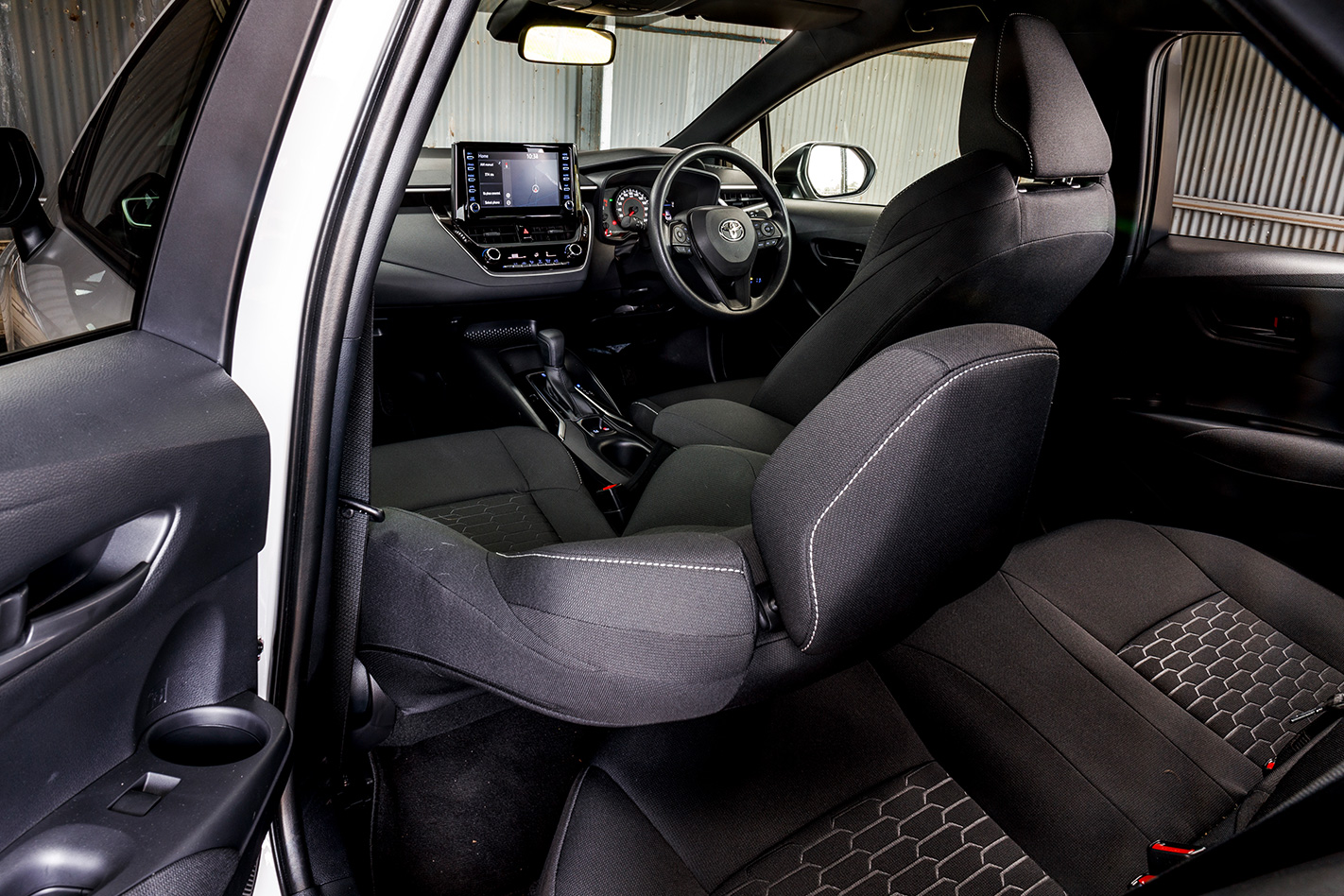
We suspect that a cheaper, de-contented non-Sport Ascent may return soon. Hyundai made a similar upmarket move with the third-gen i30 in May 2017, until slower-than-anticipated demand forced in the cheaper Go variant. Some say soberer styling than before didn’t help, but we suspect the i30’s newfound design maturity may prevail over time.
At $23,390, our i30 Active undercuts the Corolla by $980 yet includes sat-nav, DAB+, CarPlay/Android Auto and folding mirrors, but loses out on standard AEB and adaptive cruise. They’re part of a worthwhile $1750 safety pack that also brings in the blind-spot monitoring and rear cross-traffic alert unavailable on Corolla Ascent Sport, along with a leather wheel, electric park brake and rear air-con outlets.
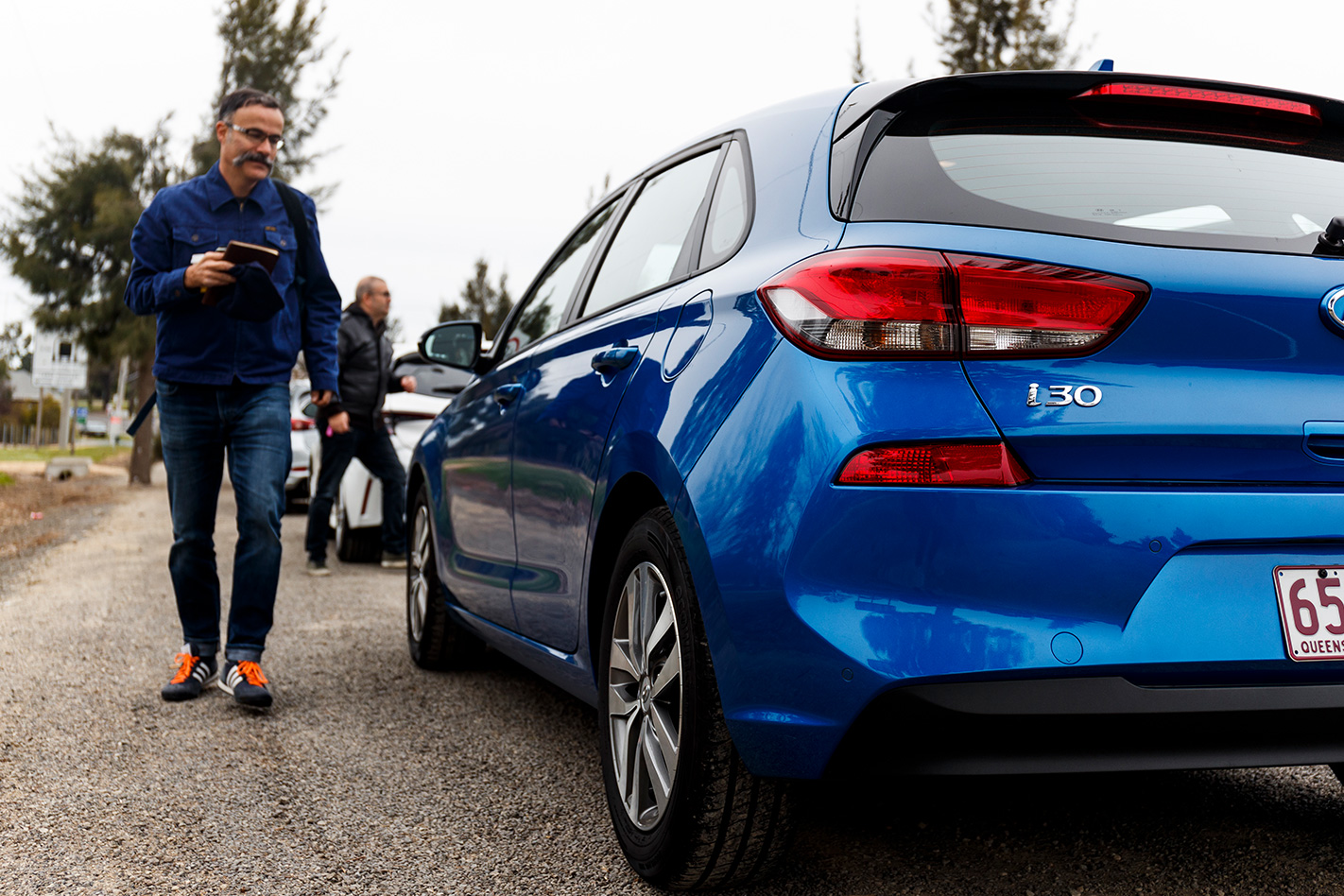
For 15 years Corolla’s fiercest sales foe has been the Mazda 3, so in comes the Maxx Sport auto from $24,490. Though active cruise and CarPlay/Android Auto are not available, the coupe-esque hatch from Hiroshima returns fire with front and rear AEB, blind-spot/rear cross-traffic alerts, leather wheel, paddle shifters, sat-nav, DAB+, climate control and folding mirrors. Except we could only test the $26,490 Touring so please ignore the leather pews and electric park brake in the pictures.
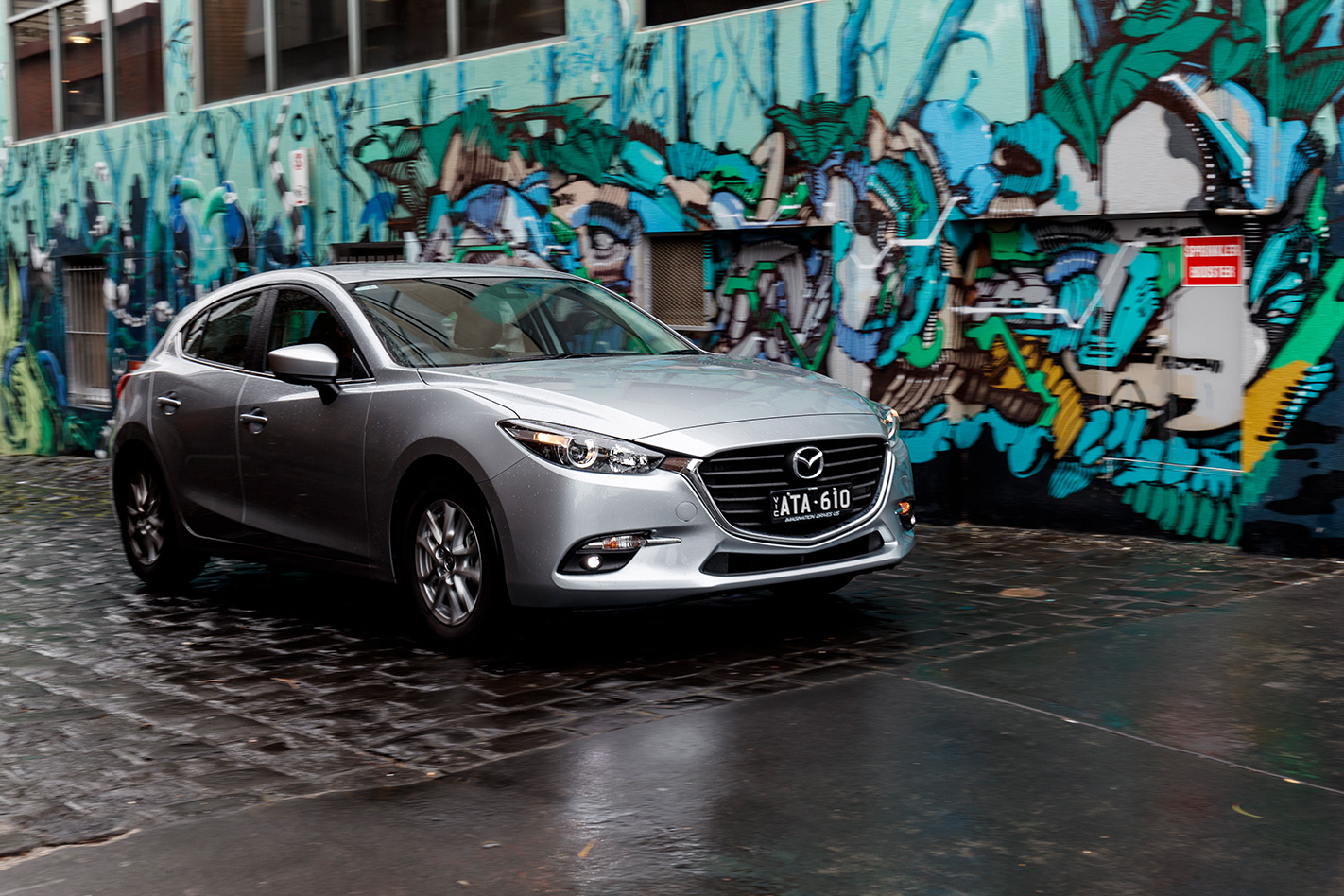
The final contestant is the Honda Civic, the 10th iteration in 45 years. The divisively styled hunchback also surfaced in mid-2017, doubling market share and soaring to sixth, behind the Corolla, 3, i30, Volkswagen Golf and Kia Cerato (which is currently sedan-only in its new Mk4 guise, hence a no-show here).
We requested the VTi-S 1.8-litre (against all the others’ 2.0s) from a Mazda-mimicking $24,490; though AEB and associated driver-assist tech are not available, it’s alone here in featuring all-digital instruments and LaneWatch – a left-lane camera for avoiding collisions with bikes. Genius. Keyless entry/start, climate control, front sensors and CarPlay/Android Auto further broaden the Honda’s appeal.
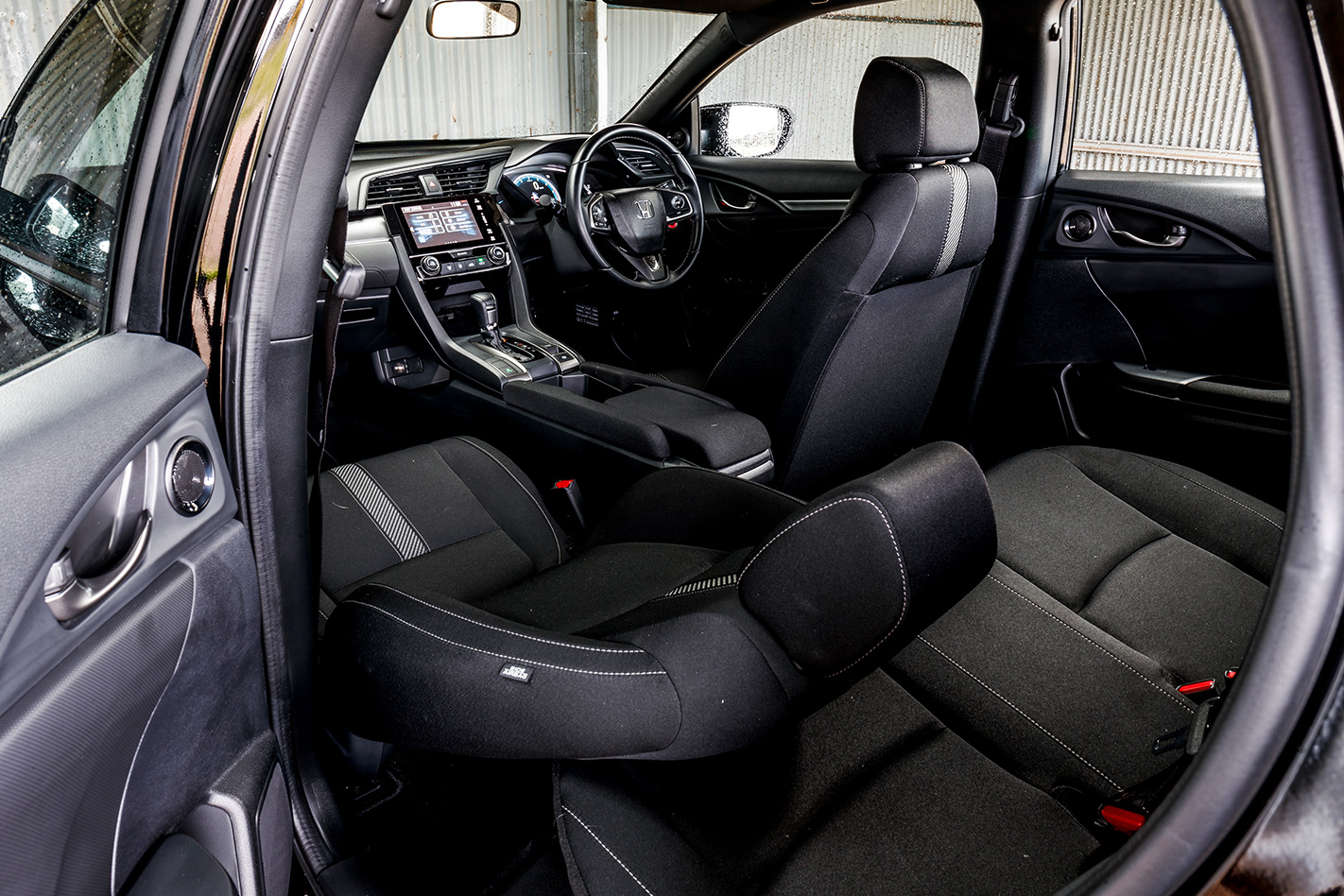
As does the vast cabin, since it’s virtually medium-sized and the largest in most dimensions bar height. This translates to a sense of wide-open space to spread out in, especially out back. Plus, the driving position is pitch-perfect, the electronic dials ultra-clear, storage stupendous and ventilation superb. Flipsides? The seats lack sufficient support and no hatch here is rowdier – it’s almost like being in a drum at times.
That’s quite damning considering there’s also the (in)famously mouthy Mazda on test, and the latter remains vocal when pressed. But shapely seats, an elegant dash and superb ergonomics help offset that. Plus, the narrow glasshouse and swoopy silhouette actually conceal a reasonably spacious cabin, as well as the group’s second-most capacious boot.
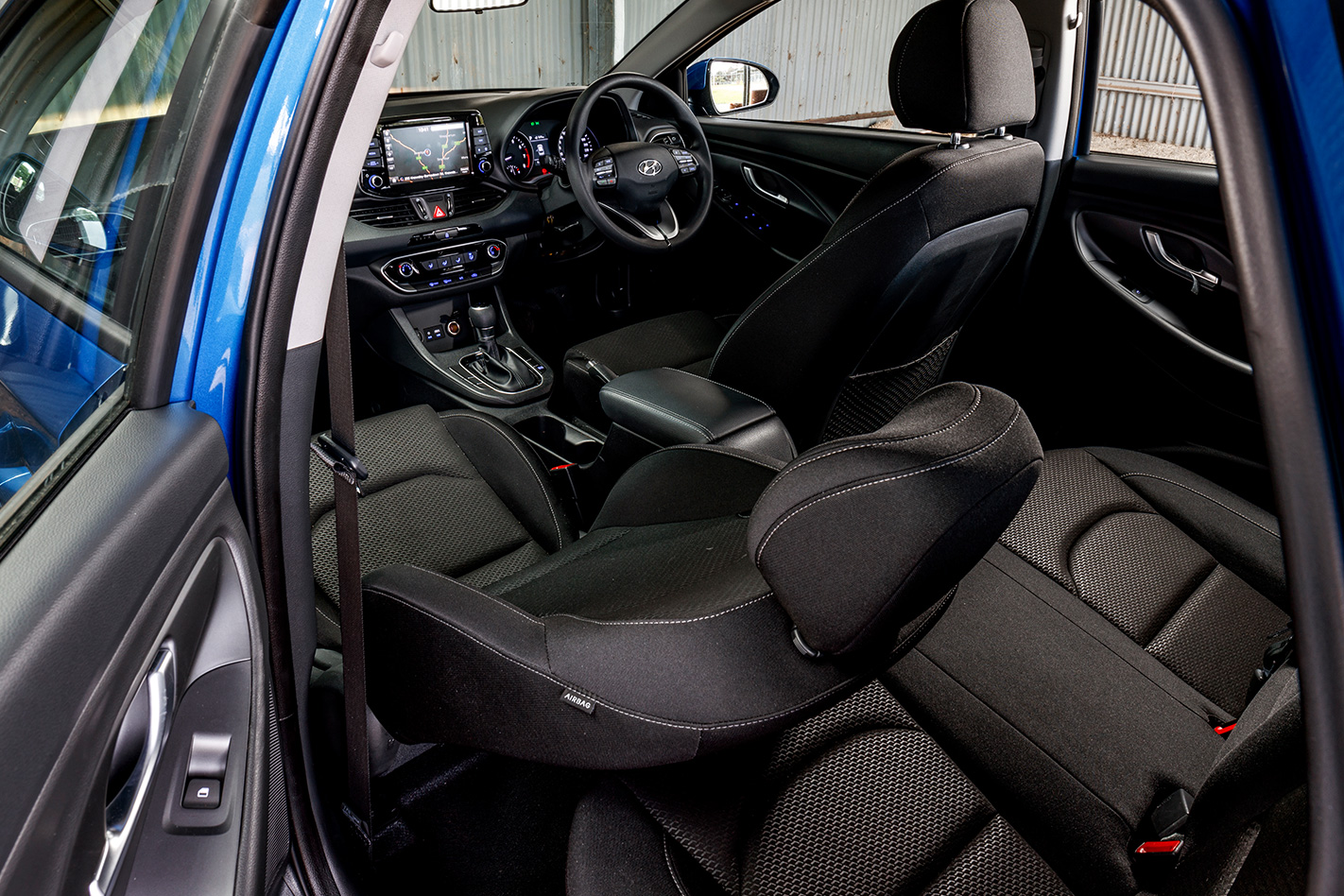
Deceptively accommodating describes the i30’s insides too. Firm seating – elevated in the rear – isn’t everybody’s cup of tea, but the lofty ceiling and unique six-light glasshouse flood in light and ensure superior vision. The dash, too, is a masterstroke of restraint and functionality, displaying almost Teutonic logic. Cover the badge and this could be from any contemporary Volkswagen Group vehicle. But for the clammy plastic wheel, it wants for nothing… except charm.
The Corolla also comes with a plastic tiller (in a $25K car… seriously?), but at least manages a more intriguing weave of character and quality engineering. Where cold textured materials hint at the Hyundai’s Frankfurter influences, the Ascent Sport’s softer, warmer trim whisper cool Nagoya minimalism. As with all TNGA cars to date, cabin solidity and finish are first class, supported by a welcoming driving position and almost-sumptuous seating. The low rear bench isn’t quite as sculptured and knee room is the most limited here, but tight the Toyota’s interior is not.
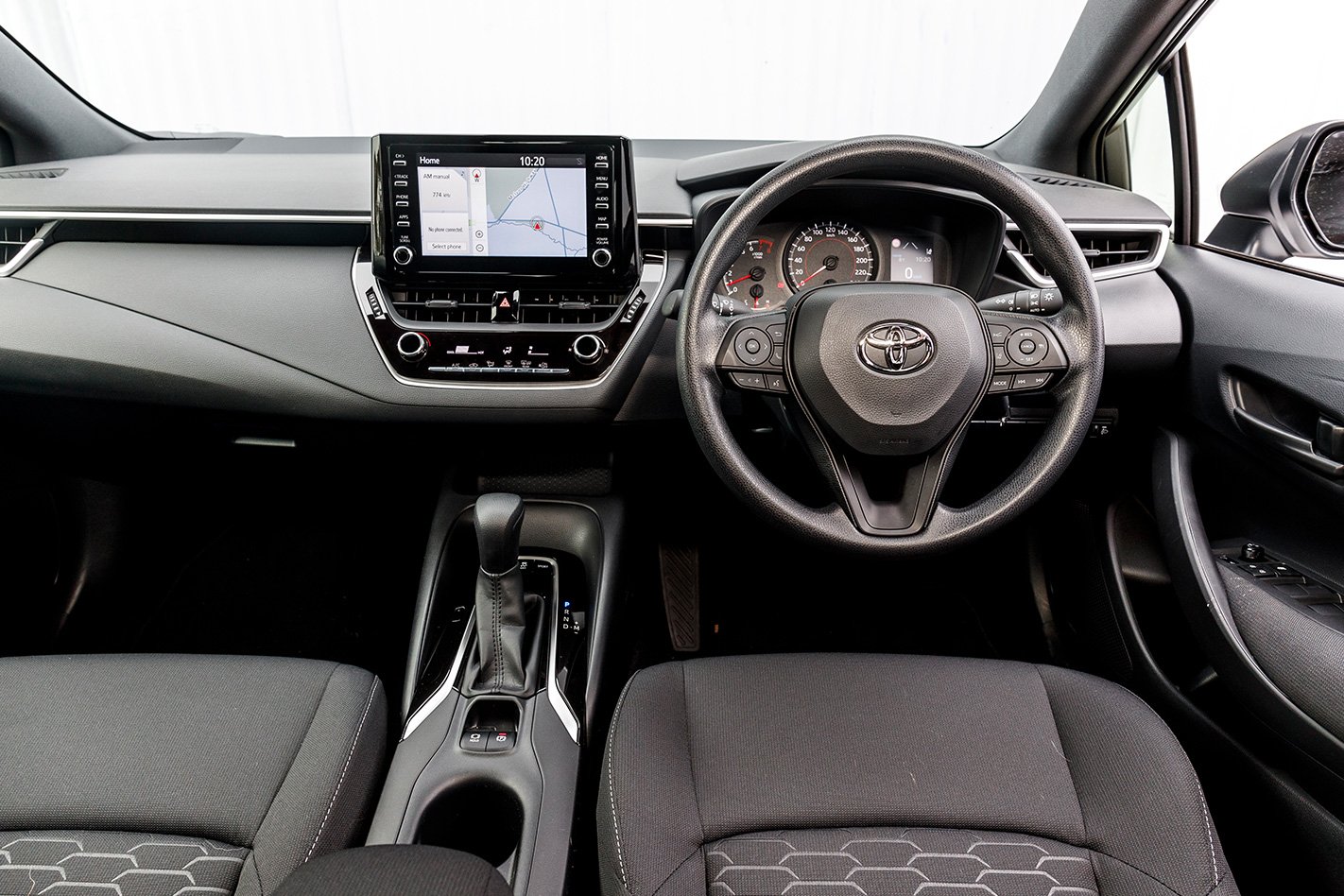
What bursts the Ascent Sport’s bubble is that bijou boot, managing little more than half the volume of the cave-like Civic’s. Blaming Corolla’s newly acquired multi-link rear is problematic too, because all but the torsion-beam equipped i30 in this posse also possess IRS.
Luckily things do improve at the other end, thanks to the Toyota’s 125kW/200Nm 2.0-litre ‘Dynamic Force’ naturally aspirated four-cylinder petrol engine. That’s the good news. The bad news is it’s mated to a CVT. Now, normally, the latter is to driving pleasure what Tony Abbott is to renewable energies; but a class-first ‘launch gear’ has been fitted, as part of a 10-speed stepped trannie, that is specially tuned for rapid off-the-line acceleration, before switching to the fuel-saving continuously variable belt that’s central to all CVTs. That’s the theory, anyway.
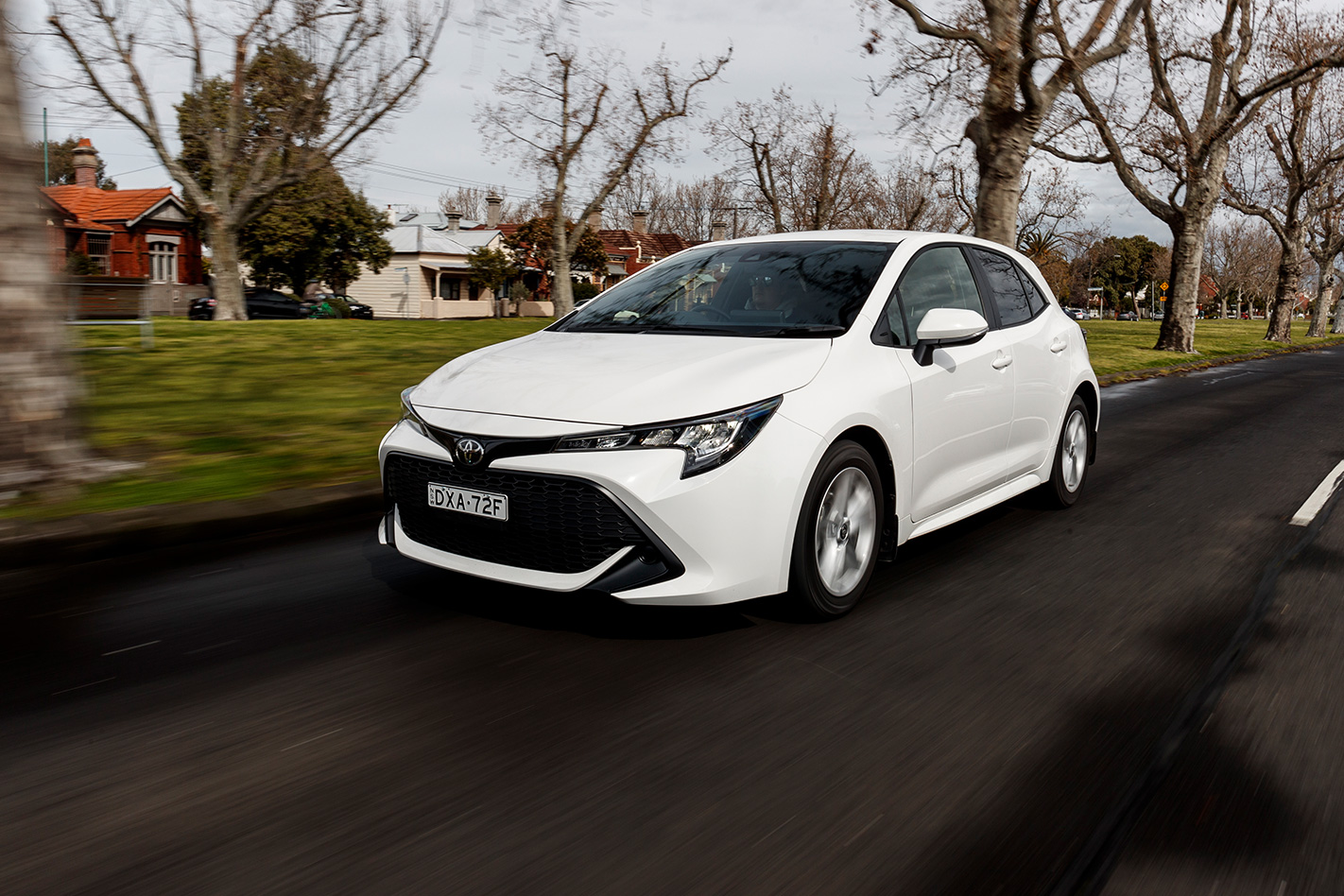
With a virginal 490 clicks on our Ascent Sport’s odo, we expected it to trail the 114kW/200Nm 3 (with 1500km) and 120kW/203Nm i30 (5000km in), but instead the Toyota matched the hard-charging Hyundai to 100km/h (only 0.1 seconds behind at 8.9s), and kept it honest past the 140km/h marker at 16.5s to the i30’s 16.3s. And from 80-120km/h they were dead-level at 5.8s. Additionally, the i30 and the 104kW/174Nm Civic were driven in the dry but rain affected the Mazda and Corolla’s results. That also explains the latter’s longer braking distances.
As mileages grew, so did the Toyota’s muscle, pulling well away from the slower Civic across the board. Better still, while mashing the throttle does result in the CVT holding the revs with accompanying engine drone, choosing Sport mode raises that rev threshold to reduce such flaring, in contrast to the perennially noisy Honda. Averaging 8.1L/100km sealed the Ascent Sport’s powertrain prowess. Who’d have believed a Corolla would ever enjoy Mk7 Golf-like efficiency dividends!
Kudos too to Mazda. Though not the fastest, the old timer proved both the lustiest and sweetest mechanically, eager to visit the 6400rpm limit, backed up by its intelligently tuned six-speeder (with more-intuitive manual pattern) and gnarliest exhaust note. And it returned 8.5L/100km while caned mercilessly.
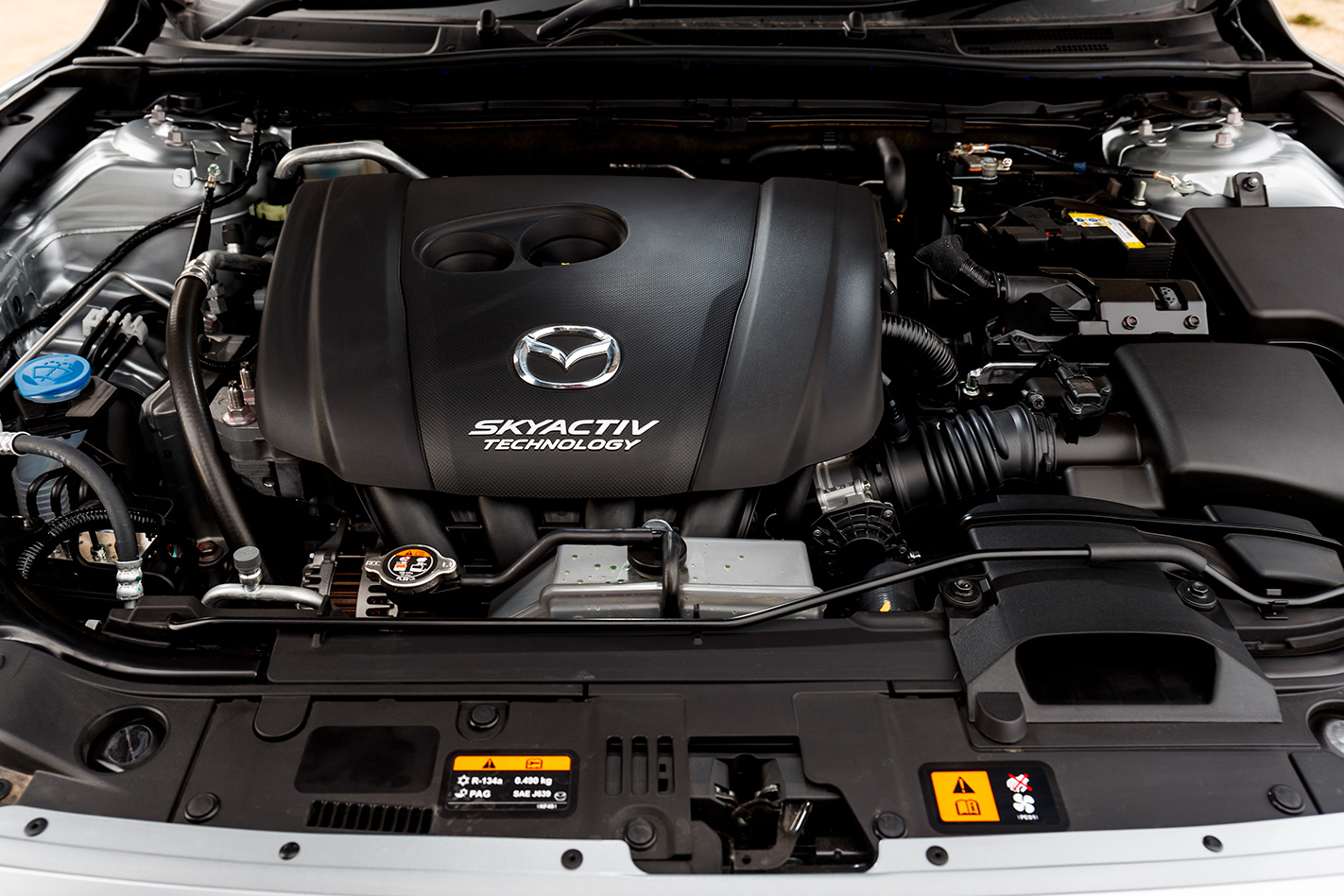
The i30, then? While spirited and eager, with a quick-shifting auto providing traffic-gap-filling point-and-squirt ease, it’s also somewhat loutish and coarse at higher revs, dissuading hard driving antics – with the steepest price to pay at the bowser to boot.
Not that the Civic, with its hoary single-cammer, is especially economical or much quieter when extended. Keen at take-off speeds, it falls away as the tonne approaches. Performance-wise the Honda seems stronger in isolation than it really is. The $3300 step to a 1.5 turbo VTi-L seems like money well spent.
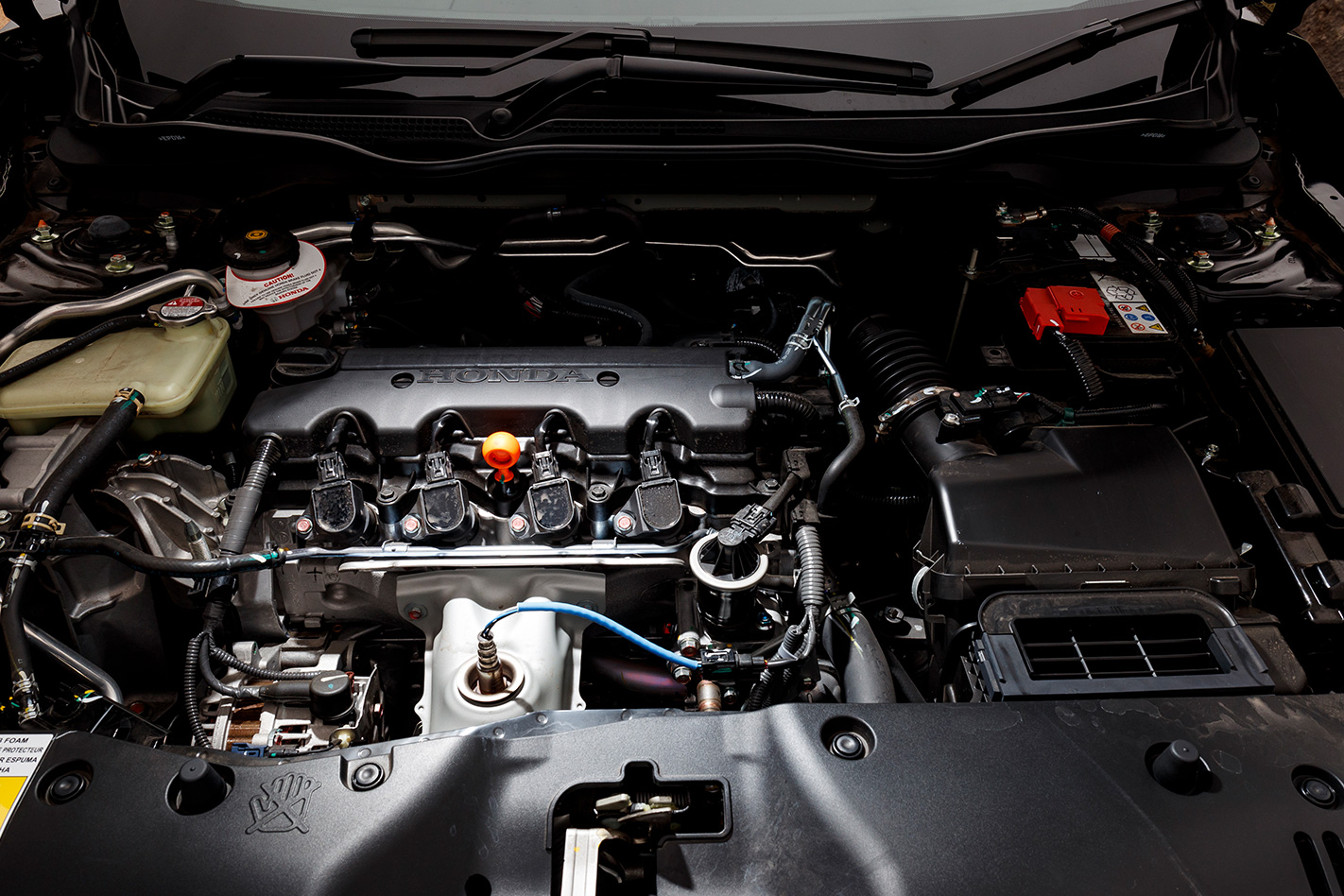
Efficiency and noise issues, however, aren’t the Honda’s sole challenges. Driven benignly, the Civic offers flat and planted roadholding, along with a loping ride quality that soaks up bumps effortlessly. Lean a little harder, though, and that inherent chassis softness encourages lateral body movement, which never really settles. Add steering that’s too direct at speed, forcing the driver to take two bites to maintain the chosen line, and progress can be a chore. So, although the underlying strength of the ‘Earth Dreams’ chassis (as witnessed in the supernaturally agile Type R) sees Civic through, the helm’s nervousness makes it feel a little underdone. More tuning is necessary here, Honda.
Conversely, the Mazda presents the loveliest steering, offering natural feel, feedback and interaction that is totally immersive if you’re up for a fang. In company with the brand’s better current models, the 3’s chassis gels delightfully the harder it’s driven. You’d need to get a bit antisocial to really explore the 3’s dynamic fluency and bandwidth, but it’s all there to be enjoyed.

The Corolla, ultimately, proves to be the most fluid and – yes – fun at all speeds, being the easiest and most secure across the spectrum … slow, fast or in between, with real steering feel and feedback, and balanced, neutral and predictable handling characteristics. Additionally, the accompanying ride suppleness is perhaps the even bigger achievement, absorbing and isolating in equal measure, to degrees simply unachievable by the others on test. We eagerly await pitching Corolla against Golf and Peugeot 308.
And the i30? Compared with the Mazda and Toyota, it feels a tad ragged (complete with rack rattle), but actually it’s also a very capable, chuckable handler. The steering’s measured responsiveness and the suspension’s firmness instil an agility all its own, allowing keen drivers to scurry through tight turns while maintaining control for boisterous if at times bouncy fun … and all accompanied by the howls of the eco Kumho rubber. Oh, and don’t bother selecting Sport as all it does is excessively weight up the steering.
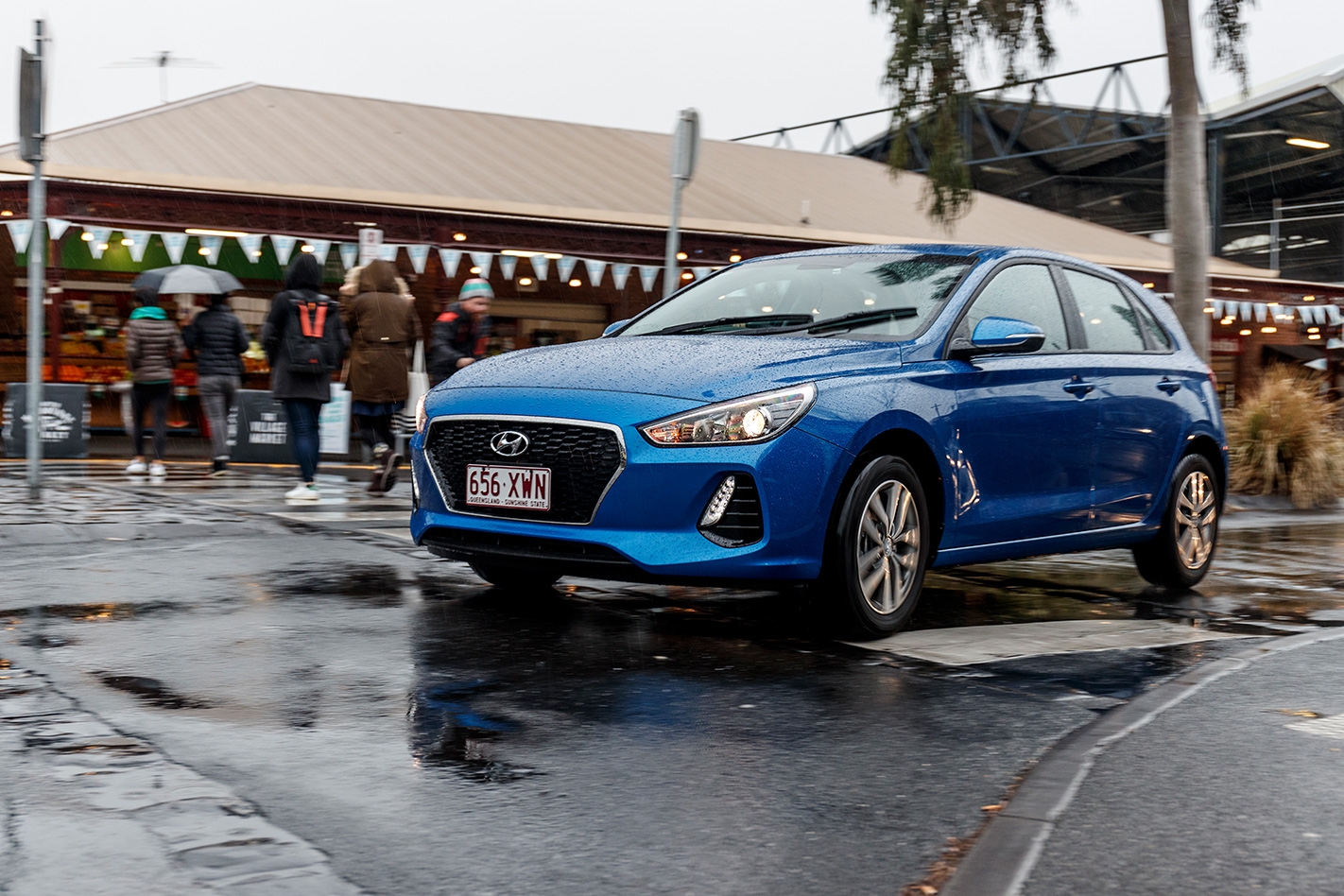
Fundamentally, there isn’t a horrible hatch here, but one has to come last and the likeable but loud Civic VTi-S is that car. Size, value, equipment, individuality and dependability remain plus points, but the noisy and dated 1.8 powertrain is out of its league now and the chassis tune is a bit at sea in our conditions.
This bargain i30 Active feels as if every box had been methodically ticked before sign-off. Choose the AEB safety pack and it essentially becomes the complete hatch experience. But there’s greater finesse, efficiency and sophistication on offer, so bronze it is for the lusty, trusty Hyundai.
That the five-year-old 3 still remains so competitive certainly caught us unawares. Clearly Mazda has worked hard refining its late bloomer, teasing out and honing all that underlying engine, chassis and cabin goodness. Next year’s torsion-beam replacement will have big shoes to fill.
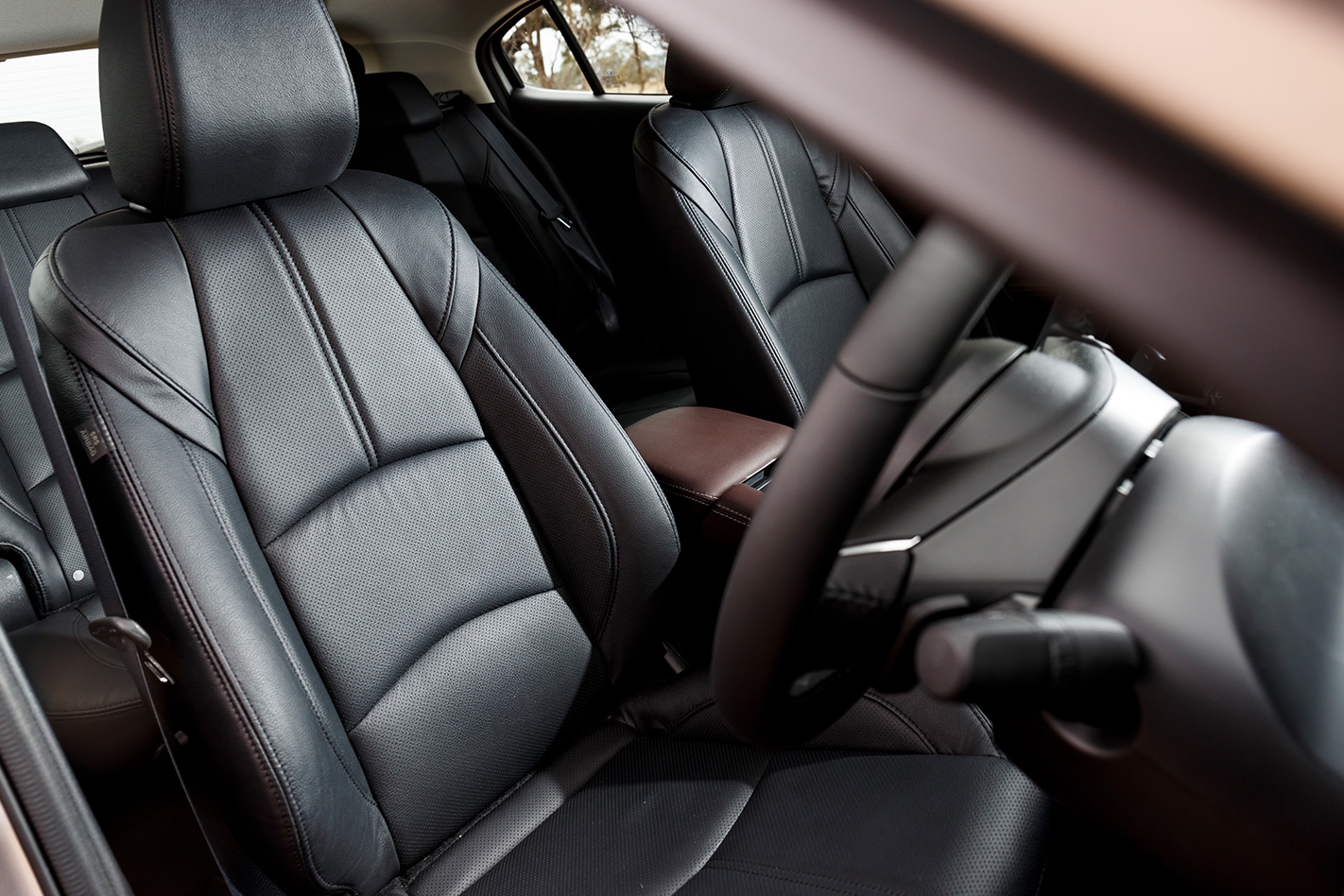
So, the Corolla finally returns to the top of a group test after 15 years. Not quite the quickest or sharpest, it is nevertheless the most frugal, fluid, contained and refined, with leading comfort and efficiency, and a lot of fun to boot.
Ah, but that meagre boot. Asking yourself how often you’d actually brim yours might provide the answer to the vexing question of how important size really is. Because otherwise this is one hell of a step forward for a small car with all the usual Toyota attributes.
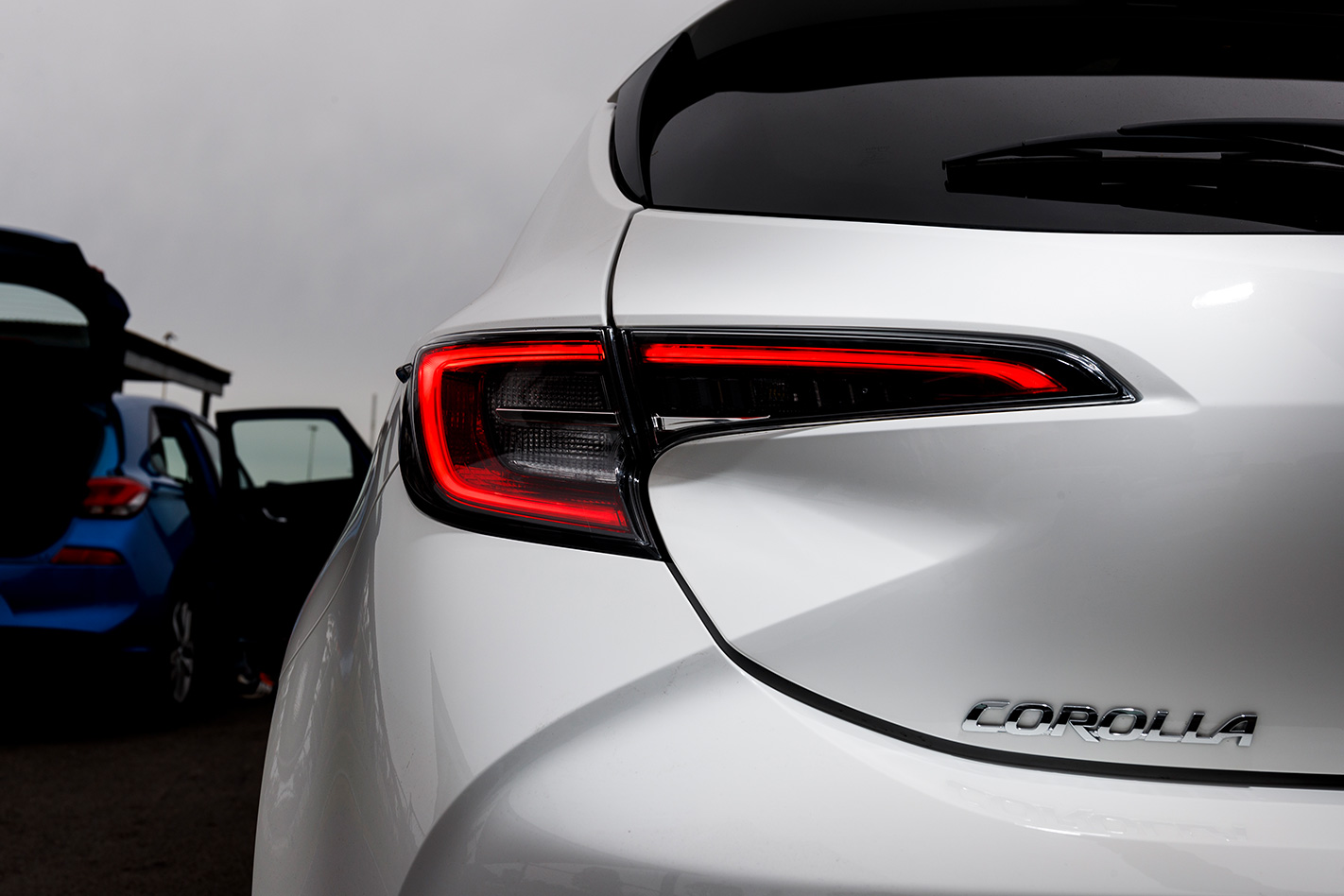
A once-in-a-decade Wheels comparo win for Corolla, then, and the most convincing since the KE20’s in ’73.

